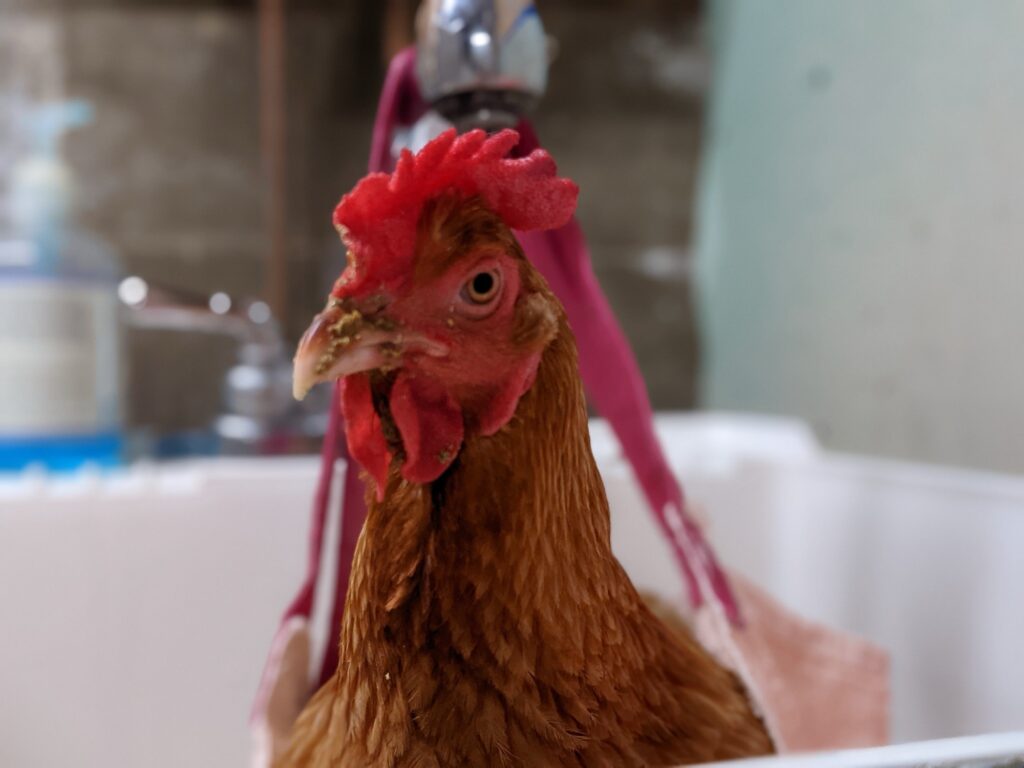
You may already know that chickens are omnivorous opportunists and, given the chance, they’ll devour a variety of protein sources: I’ve seen chickens chase down and eat small frogs (wince), along with a variety of insects. Recently, we were very surprised to see one of our hens running around with an unusual “treat” in her beak.
You may remember Beatrix from an earlier post where we discussed treating a recalcitrant case of bumblefoot. Bea had to spend a substantial period of time in the “infirmary” (AKA the attached garage) while her stubborn infection was addressed. Though she grew fond of the pampered life – she enjoyed her “spa” time so much that she would literally go to sleep while her foot soaked in epsom salts (thank goodness for the “sling”!) – her foot did eventually heal, and she rejoined her flockmates.
Bea is a big girl, and she quickly re-established her position (near the top) of the flock. One day, as we went about doing the morning chores, I noticed that she was drawing attention to herself by running around. And if you raise chickens, you’ll recognize the behavior of a hen who has acquired some sort of “prize” that she doesn’t want to share with anyone else.
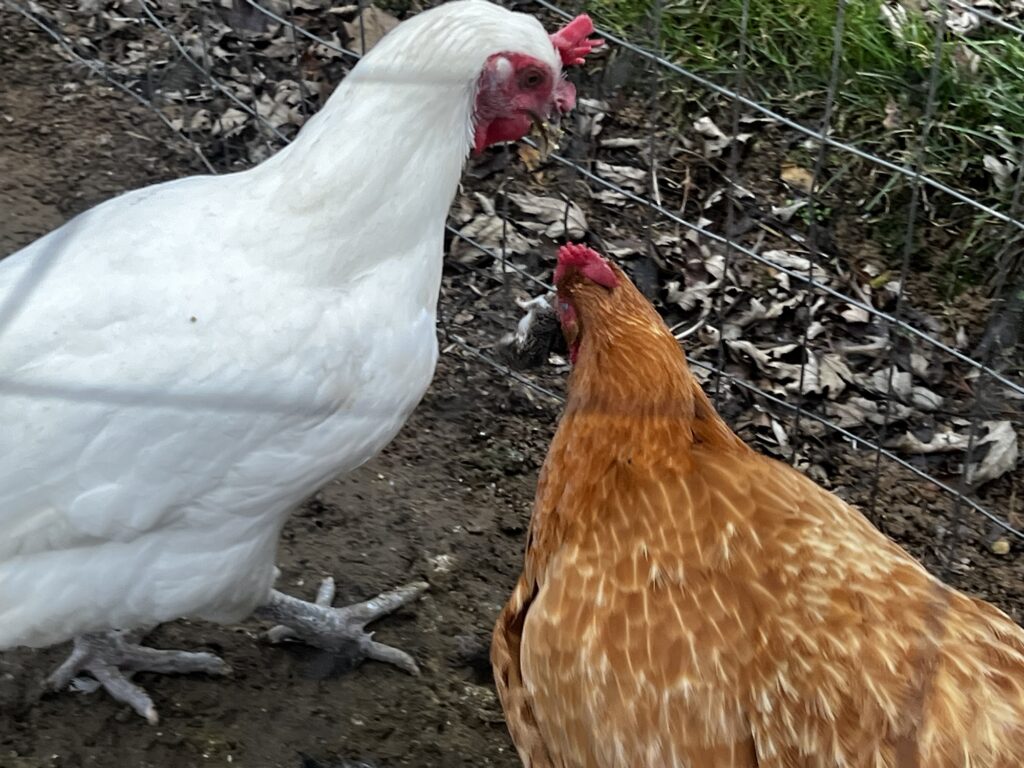
Since we no longer free range our ladies due to heavy hawk and fox pressure, they’re limited to the confines of their run. Would I prefer that they free range? Sure, but it’s not worth the risk of discovering dead or injured birds and we’ve had zero losses to predators since we changed to a coop+run setup. Insects and other creatures can still access the run because it’s fenced and covered by aviary netting, and a couple of young mulberry trees overhang the area, so I thought that maybe Bea had found a tasty and hapless bug. When I took a closer look, however, I realized that she was running around with something quite different.
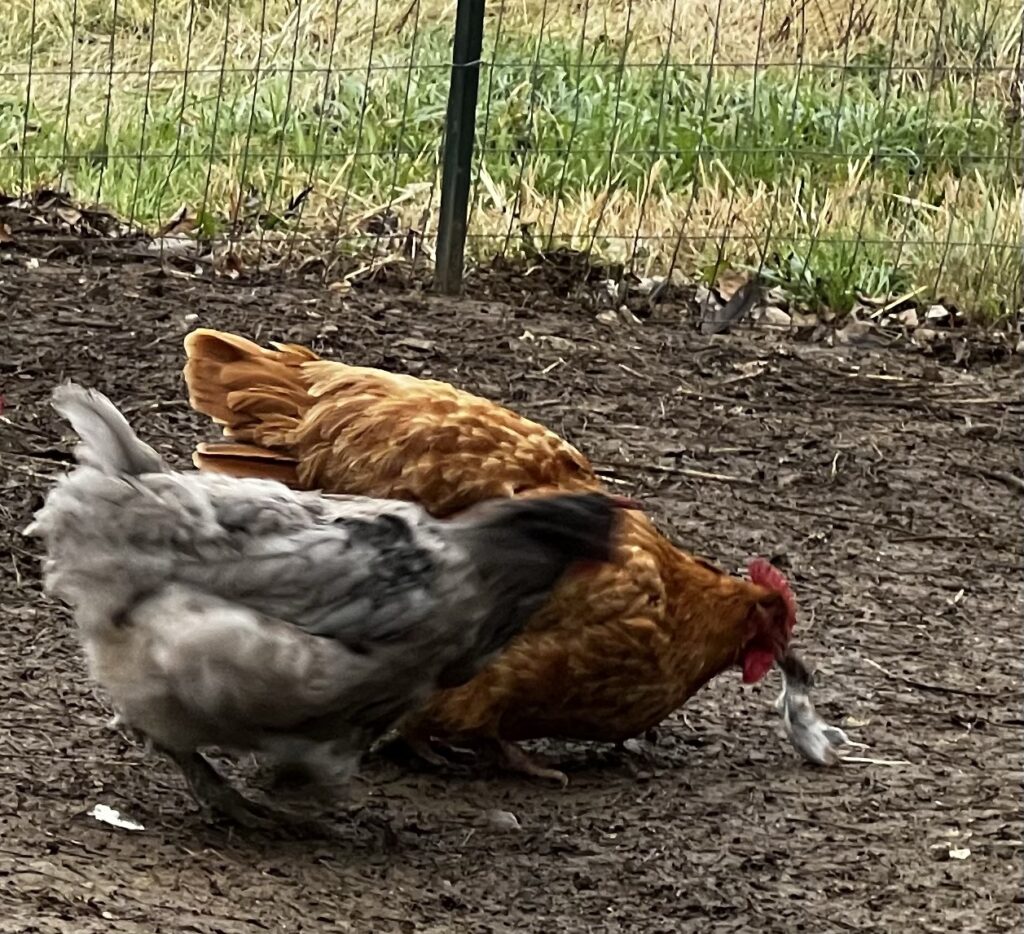
It was a mouse! Here in the “country”, there are mice, so seeing a mouse wasn’t surprising…but how had she caught it? All I can surmise is that the mouse wandered into the run, and Bea snatched it up. Once the other girls realized that she had a prize, they began chasing her. She was determined, however, to keep it to herself.
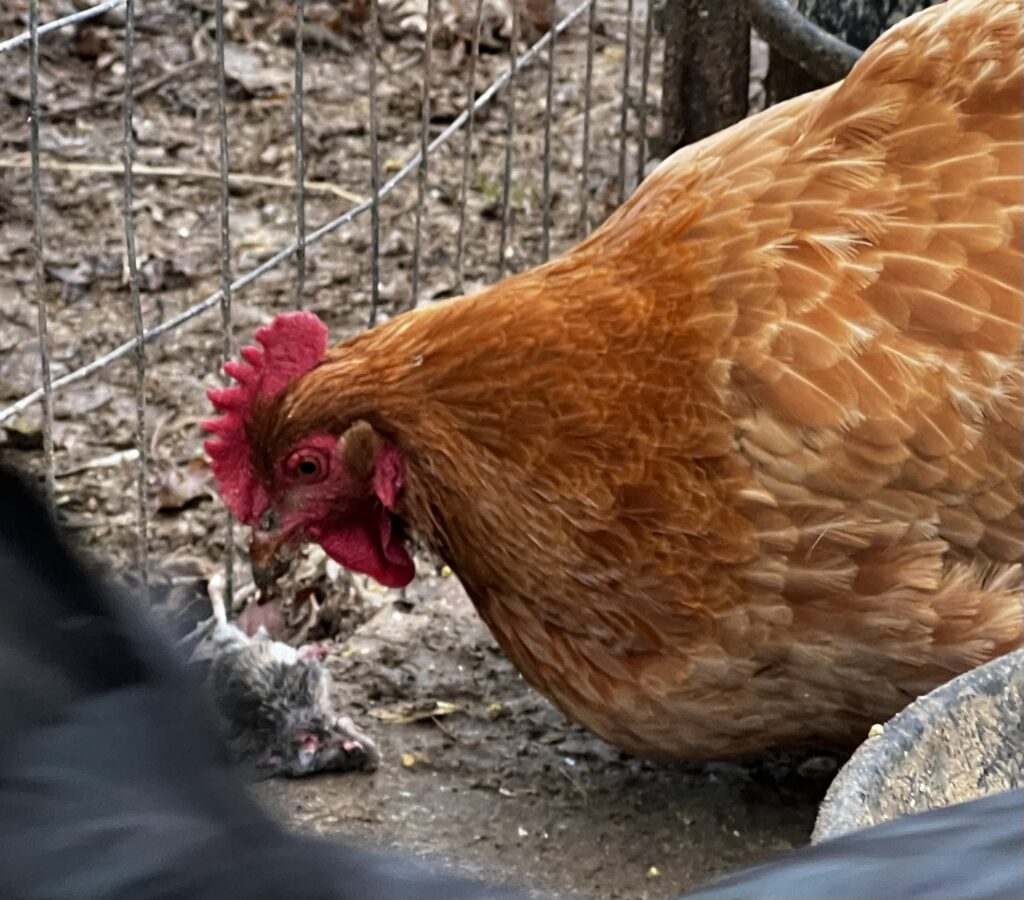
When her pursuers finally concluded that she wasn’t going to give up the mouse, she began trying to swallow it. This is where I became concerned: the size of the mouse looked grossly disproportionate to the size of her beak. At one point, I thought she was going to choke on it, and I was ready to pull it back out if necessary.
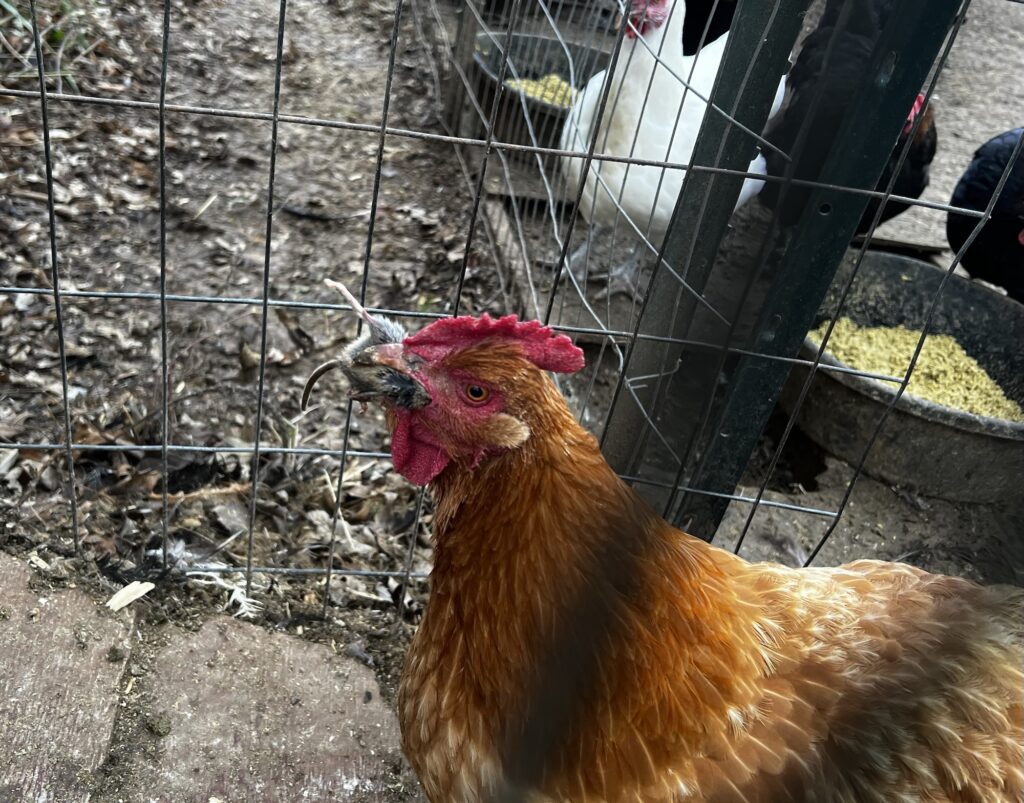
As the photos show, worry was unnecessary. Bea swallowed the mouse like a snake swallows its prey. And then she went back to eating her fermented feed, too!
While I was watching the mouse-eating saga, I noticed that her foot (the same one we had treated previously) looked swollen again, so I brought her back into the “infirmary”. This also gave me the opportunity to monitor her to ensure that the mouse didn’t cause some kind of digestive issue. Also a needless concern – while she had some unusual-looking (and smelling) poop, she seemed to digest that mouse without any difficulty.
When I examined her foot, I found a lump there that was suggestive of a recurrence of the infection. I pressed on the lump and – to my surprise – it actually popped, bloodlessly, out of the skin of her foot, leaving a very clean pocket in the skin! After a careful cleaning, application of clear iodine and antibiotic ointment, wrapping with elastic bandaging, and some quality time indoors, she was right as rain and returned to the flock.
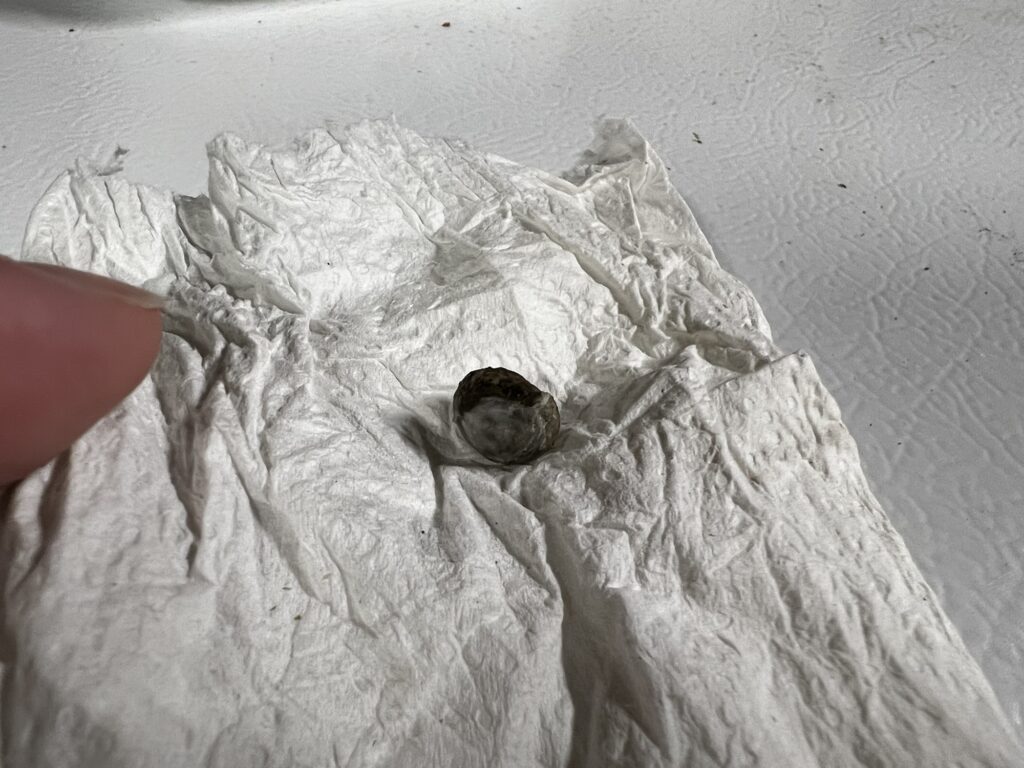
She may look like a big, fluffy, and harmless hen, but make no mistake: Bea is a killer. And she likes free range mice!
